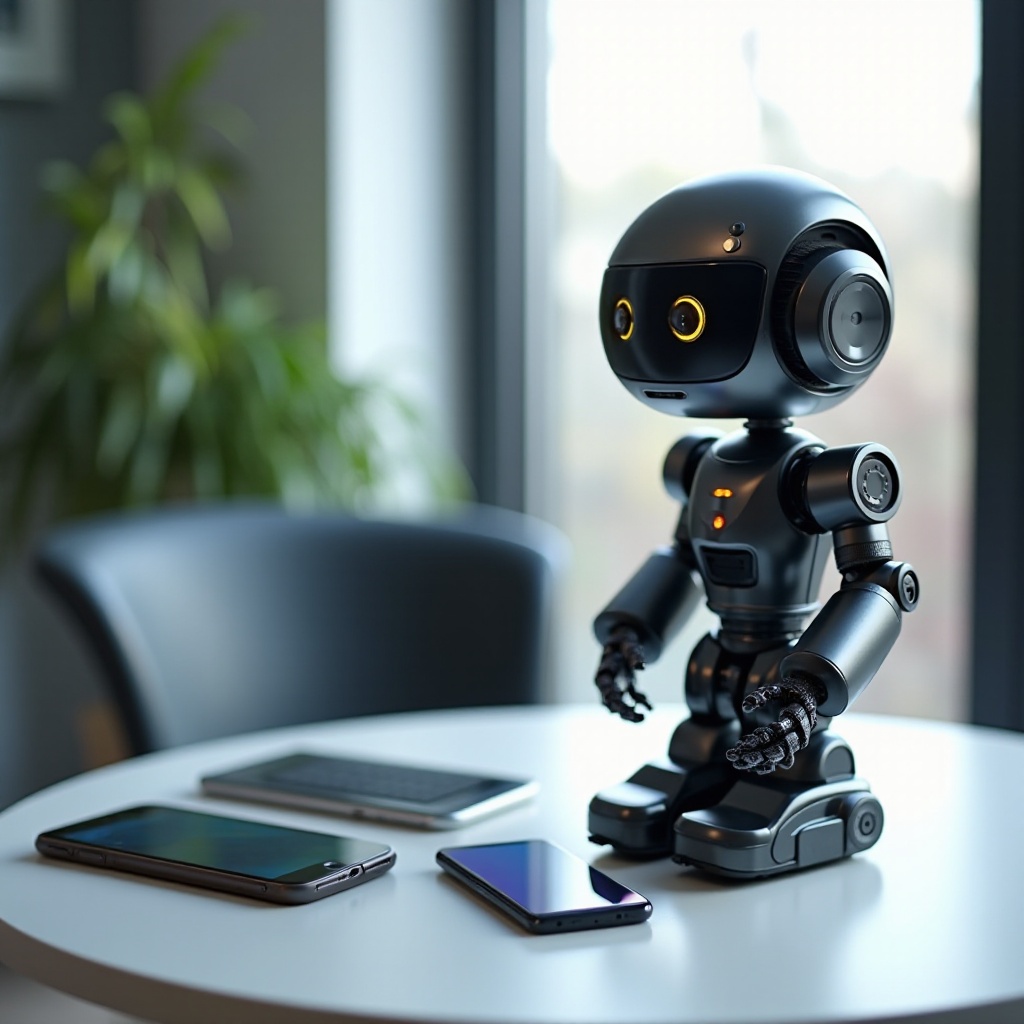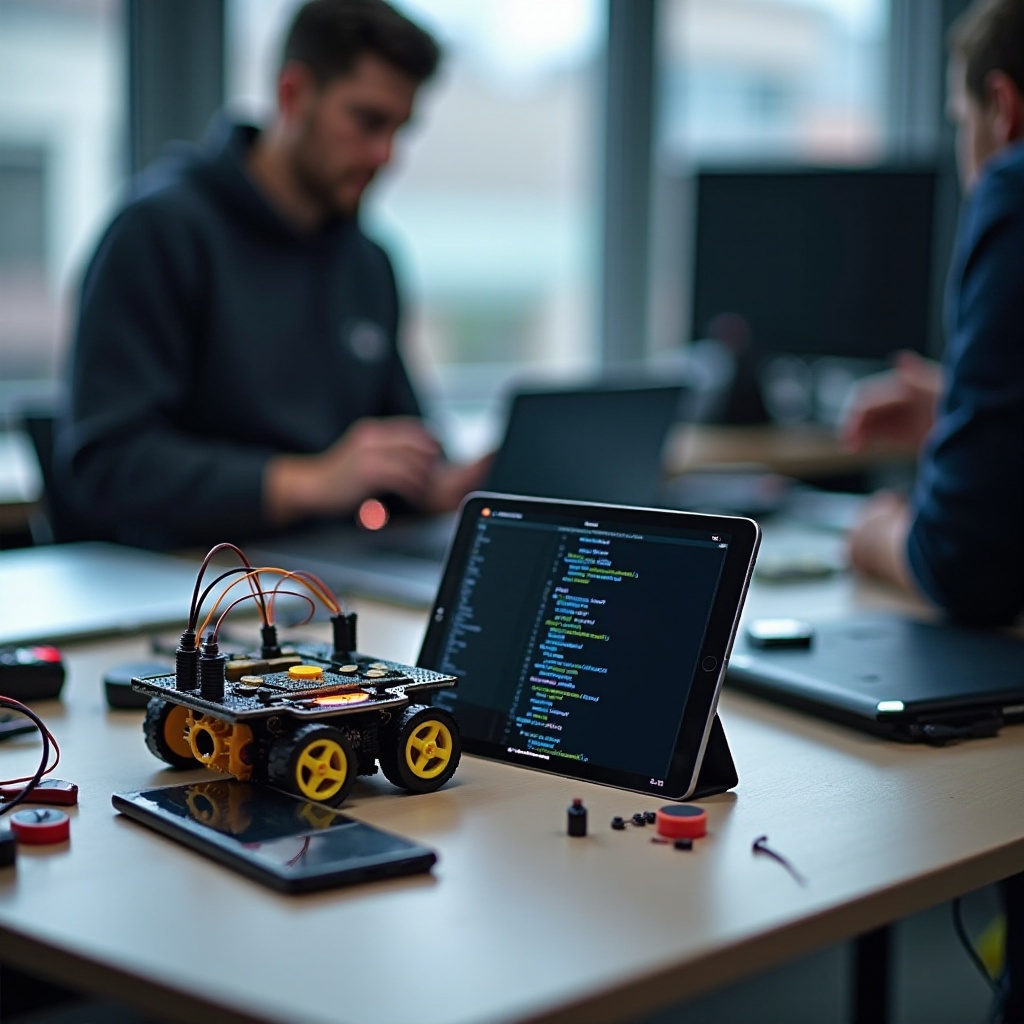Introduction
Integrating smartphones or tablets with robotics projects on GitHub offers new levels of interactivity and control. These devices, with their inherent computing power, portability, and connectivity, serve as essential tools for robotics enthusiasts. This blog aims to guide you through leveraging these mobile devices in your robotics endeavors hosted on GitHub.

The Power of Mobile Devices in Robotics
Smartphones and tablets have revolutionized how we approach robotics projects. Their integration allows real-time monitoring, control, and data processing from an accessible interface. With advanced sensors, cameras, and robust processors, mobile devices expand the functionality of robots beyond traditional setups. Concurrently, their user-friendly operating systems enable seamless deployments of app-based controls and configurations.
The positioning of mobile devices as control hubs or feedback systems redefines robotic functionalities. For instance, utilizing smartphone cameras for computer vision tasks in robotics facilitates innovations in areas like autonomous navigation and object detection. Coupled with the global platform of GitHub, where developers share and evolve ideas collaboratively, tapping into this confluence of technologies becomes viable and immensely beneficial for both hobbyists and professionals alike.
Setting Up Your Development Environment
To integrate your mobile device with a robotics project, setting up the right development environment is critical. Start by ensuring your smartphone or tablet runs updated OS versions. Familiarize yourself with development frameworks that support mobile-robotic integrations, such as Android Studio for Android devices and Xcode for iOS.
Installing requisite software development kits (SDKs) specific to your robot’s hardware is next. For instance, ROS (Robot Operating System) bridges the gap between robotics software and mobile platforms. On the smartphone front, apps like Termux (Android) enable command-line access, facilitating smoother communication between your robot and mobile device.
Finally, utilizing GitHub for version control ensures your project’s progress is documented and shared effectively. Integrating tools like GitHub Desktop or directly using Git commands within Termux or iOS’s command-line utilities fosters coherent project management and collaboration.
Choosing Compatible Robotics Hardware
Selecting compatible robotics hardware is essential for seamless integration with your phone or tablet. Compatibility ensures efficient communication and functionality. Here are some factors to consider:
- Microcontrollers: Devices like Arduino and Raspberry Pi work well with mobile devices due to their adaptable GPIO (General Purpose Input/Output) pins and robust community support.
- Sensors and Actuators: Verify sensor and actuator compatibility with both your microcontroller and the mobile app frameworks. Using BLE or Wi-Fi-enabled modules provides broader compatibility and easier integration.
- Power Considerations: Ensure the robot’s power supply can support additional mobile-based components. Integrated power management systems can prevent sudden shutdowns and maintain operational longevity.
Choosing the right hardware involves critical evaluation of your project’s scope and the chosen mobile device’s capabilities. Direct consult of resources and repositories on GitHub unveils community-tested recommendations that can streamline this decision-making process.

Connectivity Solutions for Reliable Communication
Stable and reliable communication is the backbone of successful mobile-robot integration. Here’s how to establish robust connectivity solutions:
- Wi-Fi: For broad-range applications, Wi-Fi provides high data transfer rates allowing real-time control and monitoring. Utilize modules like ESP8266 for seamless integration with mobile devices.
- Bluetooth Low Energy (BLE): BLE modules like HC-05 are perfect for low-power, close-range communication. Many robotics controllers offer BLE capabilities, enabling straightforward connections with mobile apps.
- USB and OTG Connections: Direct USB connections, facilitated through USB On-The-Go (OTG) adaptors, offer high-speed communication between your mobile device and robots, maximizing direct control over hardware.
- Cellular Networks: For remote applications, employing GSM modules can turn your mobile device into a command center for your robot from anywhere in the world.
Selecting the optimal connectivity solution depends on your project’s requirements regarding range, power consumption, and data transfer needs.
Exploring Popular GitHub Projects
Having the right hardware and connectivity is only a start. Seeing practical implementations can boost your understanding.
GitHub hosts numerous projects that successfully integrate mobile devices with robotics. Here are some popular repositories:
- ArdBot Mobile: A pioneering repository integrating Arduino robots with Android apps to control and monitor robotic movements.
- RaspberiCube: Utilizing Raspberry Pi, this project turns your smartphone into a comprehensive control unit for complex robotic tasks.
- MobileVision: Leveraging smartphone cameras, this repository dives into computer vision and machine learning applications for autonomous robots.
These projects serve as inspirational benchmarks, providing foundational codebases, documentation, and community-driven enhancements pivotal for your projects.

Creating and Sharing Your Own Robotics Project
Initiating and sharing your own mobile-integrated robotics project on GitHub is a rewarding endeavor. Follow these steps:
- Conceptualize: Define your project’s goals and requirements. Decide on the roles your smartphone/tablet will play in the robotics system.
- Prototype: Develop a basic prototype integrating your hardware and mobile device.
- Document: Create comprehensive documentation using MarkDown to explain your project’s setup, functionalities, and instructions for replication.
- Version Control: Regularly commit changes to GitHub with clear, concise commit messages.
- Community Engagement: Share your project on relevant forums and invite feedback and contributions.
Repositories with clear goals, detailed documentation, and active engagement attract collaborative development, enhancing your project’s value.
Engaging with the GitHub Community
Active participation in the GitHub community accelerates your learning and project’s evolution. Here are some tips:
- Contribute: Offer your insights and code contributions to other projects related to mobile-robotic integrations.
- Collaborate: Join discussions, issue trackers, and pull requests to strengthen your networking and problem-solving skills.
- Learn: Utilize GitHub’s rich repository of tutorials and examples to enhance your technical proficiency.
Engaging with the GitHub community fosters an enriching environment of shared knowledge and collective growth, essential for innovative robotics development.
Conclusion
Integrating smartphones or tablets with robotics projects hosted on GitHub presents unparalleled opportunities for interactivity, scalability, and innovation. With the right hardware, connectivity solutions, and community engagement, your robotics projects can reach new heights of functionality and collaboration.
Frequently Asked Questions
How do I start a robotics project using a smartphone or tablet?
Begin by setting up a development environment with necessary SDKs and frameworks like ROS. Choose compatible hardware and establish connectivity using Wi-Fi, BLE, or USB. Utilize GitHub for project management and version control.
What are the best connections for smartphones/tablets to communicate with robots?
Wi-Fi for long-range and high data rates, BLE for low-power close range, and USB for direct, high-speed communication.
How can I find support for my robotics project on GitHub?
Engage in communities, contribute to related projects, collaborate on issues and pull requests, and tap into resources and tutorials available on the platform.